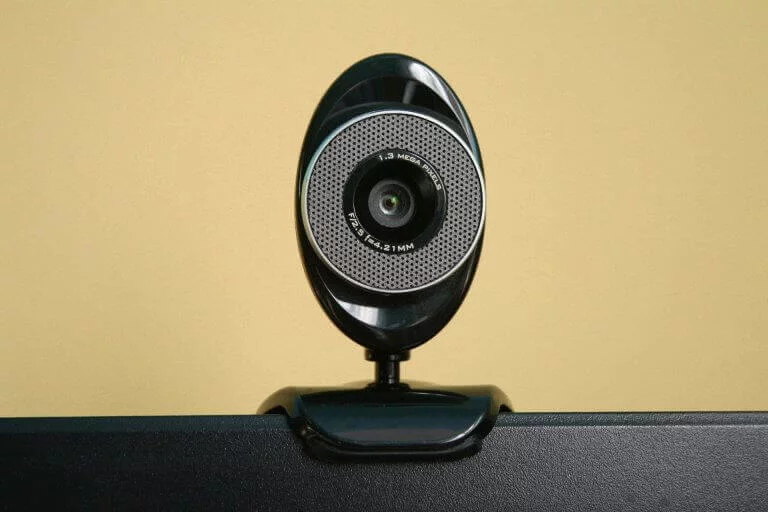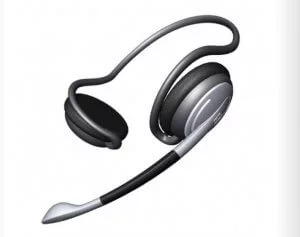
The camera and microphone are the main equipment for webinars, online courses, and video conferences. It’s important to choose these tools just as carefully as you should choose a webinar platform.
Selecting the Best Gear for Your Webinar
Summarize with
Table of contents
You can’t just count on the quality promises of webinar platforms because your own equipment also plays a big role in making the event successful.
Best equipment for your best webinar
What should you look for in a camera and a microphone for your webinar? How much will the video conferencing equipment cost, and how can you save as much as possible in the process? In this article, we will answer such important questions and discuss the nuances of choosing the right webinar tech.
Can I use a laptop camera and mic for my webinar?
Many people have this question: «My laptop already has a built-in camera and mic, why should I pay extra?»
It is true that almost any modern device will allow you to host a webinar. However, the quality of video and sound will correlate with the type of equipment you choose. You should not have very high expectations of the quality of a built-in camera or mic, as these were not designed specifically for things like webinars or conference calls.
- An ideal option. A separate camera and microphone with a pop filter, the ability to hear your own voice, projectors, umbrella lighting, noise cancellation.
- A great choice. Use a separate camera together with a headset and LED lights because this setup works perfectly for webinars and live streams.
- A regular option. A separate camera with a built-in microphone and natural lighting.
- A quick option. A laptop with a built-in microphone and camera, or just a smartphone.
The free option might be okay for catching up with friends, having small meetings, or taking short online courses. But you’ll want high-quality video and audio for essential events, marketing webinars, and expensive training sessions. This is especially true if you plan to record the session for later. Blurry visuals and scratchy sound can ruin any presentation and leave a bad taste in your audience’s mouth about your brand. It can come across as something like you need to care more to invest in good equipment, and a poor presentation can make attendees feel like they wasted their time.
While it’s more or less okay to save on a camera, a good mic is an absolute must. You don’t need to go for the most expensive product: literally, any budget option is better than the one built into your laptop. This is also how you fix a microphone echo.
You can test your equipment in your webinar room right after quick registration.
Camera for webinar
Here we will not talk about professional cameras, but rather about external webcams, since they do not require any particular skills to install and work with most popular webinar software.

Here are some things to look for if you want to choose the best webinar webcam:
- An external webcam with a USB connector.
- A camera with high resolution: from 1080p to 4K. The resolution determines the picture quality. 720p should be the lowest threshold: anything less will make your video look blurry.
- More frames per second (fps). If you buy the most budget camera with 7-10 frames per second, you will get a very jittery picture. Having a jittery picture will be almost the same as using a built-in camera, so it might be pointless to get an external webcam with too few frames per second. 30 frames per second will suffice just fine for webinar hosts.
- Good autofocus. This way the picture is clear, no matter how much you move.
- A viewing angle from 60 to 90 degrees.
Webcam Logitech HD Pro C920 for webinars and video conferencing
This model is often recommended in reviews for webinars and streaming equipment. It allows you to record video in full HD (1080p) at 30 fps. Plus, the camera has a tripod mount. Pretty cool, right?
The camera also has a decent microphone. However, it does not offer a clear studio sound, so if you want that, you’d need to buy a mic separately.
This webcam is a universal solution for webinars and video conferencing, with a price of approximately $120.
Options for more demanding hosts: Logitech C930e and Logitech Brio with 4K resolution
Good budget options: Defender G-lens 2597 HD720p, Microsoft LifeCam HD-3000
Microphone for webinar

You’ve probably noticed that almost every webcam has a built-in microphone. However, we recommend making the extra effort and buying a separate mic. It will all be worth it when you deliver a hitch-free webinar to your attendees.
Every microphone is usually larger than a webcam, and that gives you an important clue. A webcam microphone and a regular microphone cannot really be compared. The reason is simple. A webcam mic is just an extra feature meant to make the camera more useful, while a standalone microphone is created with only one goal in mind, which is to deliver high-quality sound.
Built-in microphones pick up more background noise from your colleagues, neighbors, computer, and even an aquarium. This is how you ruin the participants’ impression of your webinar. People subconsciously get irritated when there’s a constant background noise that they are forced to listen to. They are also likely to lose focus on the webinar quickly. To prevent this, it would be wise to get a proper microphone that will amplify only your voice while cutting out background noise.
Microphone every blogger loves
Let’s start with the popular Blue microphone.
It cannot be denied that Blue Yeti is good. In a retro style, this modern microphone can be connected to your computer via USB. It is compatible with both Mac and PC. You can quickly turn it off during a webinar if you need a break. The mic delivers a clear sound that will make your participants happy
Everything is great about it except the price. Not every beginner webinar creator would have $120 easily available to spend on a microphone. But don’t worry, we’ve listed excellent alternatives below.
Webinar microphones under $50
You don’t have to spend a lot of money right away because there’s a great option called Snowball iCE that costs only $39.99. It still gives you clear, beautiful sound and simple USB connectivity. On top of that, this microphone looks fantastic on camera.
Samson Meteor is another of the microphones anyone can safely recommend. It works great both in quiet rooms and apartments with no sound insulation. You can capture great audio for automated webinars, online courses, and podcasts.
The mic is good at removing creaking, hissing, and other annoying noises. It can also help you control your voice: you only need to connect your headphones.
However, the biggest disadvantage of this mic is the mount.
Other options include FELYBY BM-800 and TGETH SF-666.
It may be easier for you to choose a mic if you get to hear the difference in sound. There are many reviews on YouTube comparing the sounds of different microphones. Check them out and pick the one that works best for you based on quality and affordability.
Headset for webinar
If you do not want to buy a microphone, you can get yourself a headset. Let’s discuss what headset is best in terms of quality.
Many would agree that a good camera and mic are necessary. However, it’s important not to overlook a headset that needs to be convenient to use. It should also be one size fits all, meaning you should be able to connect it both to your computer and your laptop or smartphone.
What to look for in a headset for webinars and video conferencing
- A lightweight neckband headset. Do not forget that your webinar can last an hour or even more.
- Closed dynamic headphones. They are helpful if you can’t find a quiet room for your webinar.
- A noise-cancelling and adjustable microphone.
- Easy connection.
- Volume control on the cable and the mute button.
Sennheiser PC 141 headset for just $20 turns out to be a good solution, that is, of course, if you don’t mind all the wires. Here you can find more options for neckband headsets.

Wireless headset for webinar, Mpow V4.1 Bluetooth headset
For those of you who hate untangling wires, there are wireless alternatives.
Mpow V4.1 Bluetooth Headset is lightweight and convenient. Despite the low price (about $20), this headset allows you to hear others clearly. It also perfectly captures your voice due to its noise-cancelling feature. The headset only has one earpiece, so you can hear what is going on around you.
However, remembering to charge it can be a disadvantage for busy people. Nowadays, it seems like we have to charge almost everything we use (who knows, maybe in the future we will have to charge our clothes too).
What about choosing all three in one?
Yes, you can have the best of all worlds. You can have lighting, a camera and a microphone for a webinar all on one device. This option is perfect if you do not want to bother with searching for different tools and want easy solutions. It can also help you keep your desk in order.
Marantz Turret Broadcast Video Streaming System is one example of such devices.

This universal system can be used for YouTube streams, webinars, and video conferences. It is also ideal for video game streaming.
The price is around $275 (well, such a device obviously wouldn’t come cheap). For this price, you get the entire kit: Blue Yeti microphone, Logitech C920 camera and a 40W LED ring.
The pros of Marantz System
- The camera uses autofocus and supports HD 1080p (1920 x 1080) resolution at 30 fps.
- It is an all-encompassing choice for video streaming.
- It is possible to record a video.
- The sound is of the utmost quality.
- There are no tangled cables or complicated connection procedures, which is often the case with non-integrated equipment.
- It’s possible to invite a second speaker since the system can capture several voices.
- There is no background noise.
- The control panel is pretty convenient.
- The speaker can choose whether to transmit their voice or the sound from their device.
- The speaker can listen to the microphone’s sound.
The cons of Marantz System
- The system is heavy and has no standard sizes. This makes it difficult to transport.
- The equipment occupies a lot of space. It is even a bigger issue when you’ve got two monitors.
- It’s impossible to set the camera vertically, which means you cannot stand during a webinar.
- The microphone will always be visible for your participants.
Having a camera and microphone for a webinar is not everything
Although getting the right webcam and microphone are very important for your webinar, there are other factors that should not be ignored.
- When choosing a webcam, you should not forget to take care of the lighting and filters. The least you can do is buy a simple camera tripod for $15. It will allow you to set up the camera with ease and choose the right angle.
- The video quality depends not only on your camera but also on the webinar service and its settings. Not every platform can support a 4K recording.
- It makes no sense to buy an expensive camera and mic if you’ve got a bad internet connection. It is important to secure a good connection and possibly a backup connection before hosting your webinar.
- The quality of your webinar will also vary based on the plan and pricing you selected.
- Make sure your device has got enough jacks for your headphones and microphone. Some devices only have one jack (the so-called 4 pole jack), so you will need an adapter to make your webinar work.
It is a minor detail that will save you from disaster in case you have equipment with no USB port.
- Use a pop filter to eliminate unwanted sounds such as hissing and popping sounds. While the filter may not look too good on screen, it is better to use it when you record video lessons.
- Make sure to allow your browser access to your camera and microphone.
- Close Skype and other programs that may use your device before starting a webinar.
Conclusion
What to look for in a camera and mic for webinar, video conferencing, and e-learning?
It mostly depends on what you can spend and what you want to achieve. The general idea is to buy the best equipment you can afford that fits your goals. You do not need to get the most expensive microphone or camera right away; it just has to deliver good quality. The most expensive gear does not always mean it is the best choice or the right one for you, especially when it comes to camera and microphone.
Start today by signing up on the webinar platform MyOwnConference.
FAQ
Yes you can use the built-in camera and microphone of your laptop but you should expect lower quality video and sound because they weren’t designed specifically for webinars or professional calls.
For a good webinar webcam you should look for an external USB connection high resolution (minimum 1080p ideally up to 4K) around 30 fps good autofocus and a viewing angle between 60 and 90 degrees so your image stays clear even when you move.
A separate microphone is built solely for high-quality sound and helps you get much clearer audio it picks up less background noise and provides a more professional experience for your audience.
If you’d rather not buy separate pieces you could use a good headset with a noise-cancelling mic or even a combo device that incorporates camera microphone and lighting into one unit and that can save you space and simplify your setup.
Equipment is very important but not everything you also need good lighting a stable internet connection the right platform settings and proper room setup because even the best camera and mic won’t fix a bad connection or poor lighting.
An expert behind the simplified online meeting and webinar software platform, MyOwnConference. In today’s flexible work environment, Dan offers invaluable life hacks, in-depth reviews, and savvy tips for organizing, promoting, and excelling in virtual conferences and webinars.











